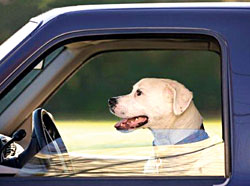 The first time I became aware of the jingle word, an ever increasing phenomenon in the Nepali language, I was in a taxi. The driver was from Dhapakhel and he told me what his village was like. It is a most beautiful place, he said, because at night from his house he can see all the lights of "airport-sairport". I naively asked the driver for the meaning of "sairport". He merely shrugged his shoulders.
The first time I became aware of the jingle word, an ever increasing phenomenon in the Nepali language, I was in a taxi. The driver was from Dhapakhel and he told me what his village was like. It is a most beautiful place, he said, because at night from his house he can see all the lights of "airport-sairport". I naively asked the driver for the meaning of "sairport". He merely shrugged his shoulders.
The Nepali language has a lilt and a musical tone because of the number of enjoyable jingle words matching the mood of the expression. Family members are known by their jingles, such as dai-bhai, mama-kaka, chhora-chhori, and little girls are known as cheli-beti. Early summer morning, when the air is crisp and clear and birds announce the new day, we say it is rim-jhim. Over holi your clothes become rangi-changi, which can be seen wari-pari, all around. In the market, where wedding processions with baja-gaja can be seen dayan-bayan, we buy mal-saman. After that we have dal-bhat together with our friends, sang-sangain.
But of late, Nepali colloquialism seems to have got out of hand. New jingles pop up like rebels in the hills and the speed at which new rhymes are invented requires a daily update of my Nepali dictionary. A friend says he loves to listen to geet-sangeet during his khaza-saza. A well-educated neighbour expresses his concerned about the bhid-sid and increasing number of pasal-sasal in Kathmandu's gulli-sulli.
When I buy a new carpet for the house the shopkeeper says I shouldn't worry. His carpet-sarpet are the cheapest and best and his tasne-sasne manche are without a doubt the most experienced in the district. A neighbour down the road is looking for a job and claims she makes excellent coffee-soffee for office staff during their meetings-seetings. A friend praises her, saying how she has even been to Italy-sitaly to work for bideshi-sideshis like myself.
And so it goes on. Friends are complaining about the fact that these days palung-salung is not available in the market because of the nakabandi-sakabandi and if it is there it costs a lots of paisa-saisa. People who build a new house, get their painter-sainter to put matching rang-sang on each and every wall. Naturally, the design-sesign of the mansion in question has to be a good one and should include a comfortable parking for the car-sar and a suitable house for the expensive kukur-sukur.
It is not surprising that those who mix their mother tongue with English would pioneer updated variations of the words. Anyone with a computer-somputer hides the cable-sable or tar-sar behind a fancy office table after which they google-soogle till the cows come home. Or they buy the latest gadget-sadget and skype-sype or email-semail with nata-gota and sathi-bhai around the globe.
I am sure the assault of jingle words does not stop at the rim of the Kathmandu Valley and that villagers including Maobadis and Khaobadis add their own new juicy expressions to the Nepali language. I imagine them talking about their dukha-sukha, marked by julus-sulus and baltin-saltin and socket-wocket bombs. No doubt many rural Nepalis are at this very moment busy getting their passport-sassport and dollar-sollar needed to escape the country's grim reality.
Last week I was on my way from Dhapakhel to Lagankhel once more, and decided to do a little experiment. Could I invent a new jingle word and introduce it into the Nepali language, to be enjoyed for many generations to come? "O dai, Lagankhel ma taxi-sexy haru painchha?" I asked casually. The driver did not miss a beat. "Hirnus", he said, "Lagankhelma thupro taxi-sexy painchha!"
If tomorrow you hear someone calling out for a 'Taxi-sexy!' you know who to blame.



